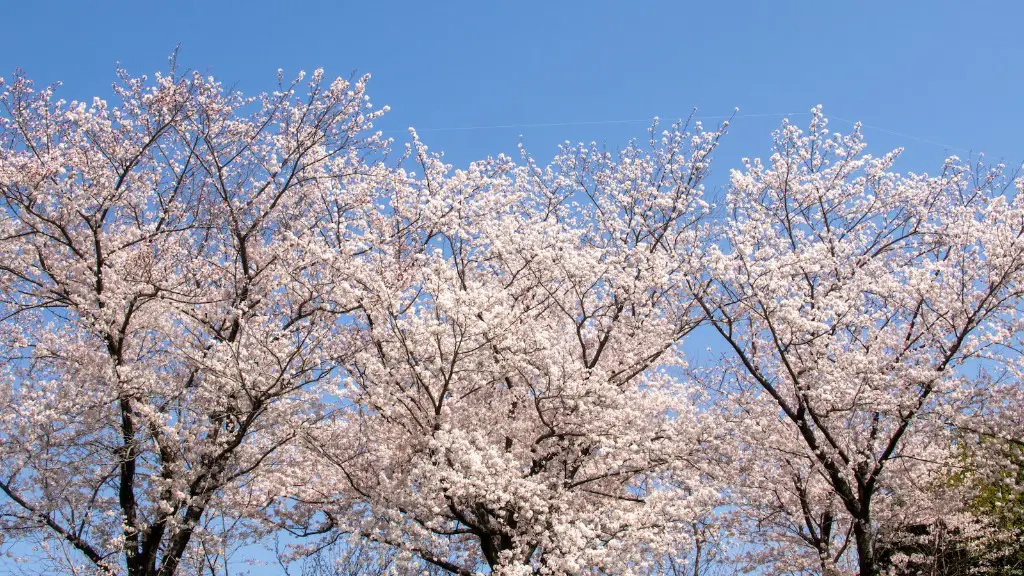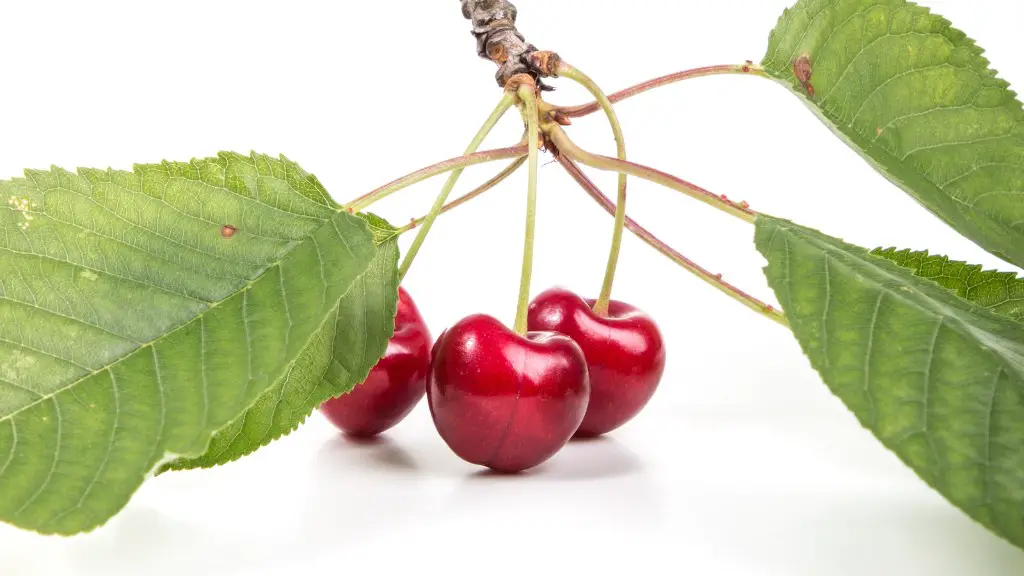The Dwarf Meyer Lemon Tree is an ideal indoor-growing citrus tree, producing a steady yield of tart, juicy lemons. But how many lemons does a Dwarf Meyer Lemon Tree actually produce? The answer depends on several factors, including the growing conditions and proper care of the tree. With optimal conditions and proper maintenance, a Dwarf Meyer Lemon Tree can yield up to 40 fruits a year with a single tree.
Most Dwarf Meyer Lemon Trees are grafted onto a semi-dwarfing rootstock, providing a semi-dwarfing tree with a compact, spreading habit – perfect for indoor container growing. When grown in a container, a Dwarf Meyer Lemon Tree can grow to a height of up to 5ft, making it a perfect fit for a sunny, windowsill spot. An outdoor-grown tree can reach up to 8ft in height, with an upright, vase-like shape.
With proper care, a Dwarf Meyer Lemon Tree produces flowers in the early spring months that fill the home with their delightful aroma, making the home a fragrant paradise. The flowers, if pollinated, will eventually mature into ripe lemons. Dwarf Meyer Lemon Trees need a minimum of 8 hours of direct sunlight in order to properly ripen the lemons. If cared for properly, the tree can yield up to 40 ripe lemons a year, with some individual lemons reaching a diameter of up to 4 inches.
Meyer Lemon Trees require regular pruning, a relatively abundant supply of water, and a balanced fertilizer to ensure good fruit production. All these requirements can easily be met with appropriate care, with the top priority being ample sunlight exposure. By providing the Dwarf Meyer Lemon tree with the best possible growing conditions and proper maintenance, the tree can enjoy a productive lifespan with plenty of fruit production.
So, depending on the well-being of the tree and its caretakers, a Dwarf Meyer Lemon Tree can produce a good yield of 40 fruits a year. But even if the tree isn’t harvested to its full capacity, there’s something immensely satisfying in watching a healthy and happy lemon tree growing in the home.
The Benefits of Dwarf Meyer Lemon Tree
Dwarf Meyer Lemon Trees are becoming more and more popular for both their fruit production and aesthetic beauty. Meyer Lemon Trees produce a tart, juicy and fragrant lemon, making them the ideal choice for sweet and sour recipes, marinades and sauces. Beyond cooking, Meyer Lemons offer a variety of health benefits, such as a high Vitamin C content, an anti-inflammatory compound, as well as antioxidants to help reduce the risk of cancer.
In addition to their health benefits, Dwarf Meyer Lemon Trees provide a beautiful accent to any home. Their lush green foliage, aromatic flowers, and bright, yellow lemons makethe Dwarf Meyer Lemon Tree a unique and attractive decoration. The tree is compact, making it perfect for growing indoors or outdoors, on a balcony or patio.
Given the abundance of benefits it offers, the Dwarf Meyer Lemon Tree is an ideal choice for those wanting a healthy and beautiful addition to the home. With a steady fruit production and bright green foliage, it’s hard to go wrong with a Dwarf Meyer Lemon Tree.
The Lifespan of a Dwarf Meyer Lemon Tree
When cared for properly, Dwarf Meyer Lemon Trees can have a productive life span of up to 15 years. Though of course, it will require plenty of TLC to maintain a healthy tree over such a long period of time. The right growing conditions and nutrition must be kept consistent to ensure optimal fruit production. This includes providing ample sunlight, adequate water and a balanced fertilizer regimen. With regular pruning and plenty of water, Dwarf Meyer Lemon Trees can enjoy long, productive lives.
To help maintain a healthy Dwarf Meyer Lemon Tree, regular inspection of leaves and stems can help to identify any potential diseases or infestations that can harm the tree. Any pests or disease should be addressed promptly to keep the tree healthy and productive for years to come.
A Dwarf Meyer Lemon Tree is an incredibly rewarding tree to have in the home. With their tart lemons and fragrant aroma, they truly add life and beauty to both outdoor and indoor spaces. Their lifespan of up to 15 years, with a steady fruit production of up to 40 lemons a year, make Dwarf Meyer Lemon Trees an excellent choice for those looking for a productive and aesthetically pleasing citrus tree.
The Taste of a Dwarf Meyer Lemon
Dwarf Meyer Lemons are prized for their unique, tart, and juicy flavor. Their lemons are bright yellow in color, and they have a thin, sweeter skin that is perfect for cooks looking for a sweet and sour combination in their recipes. The juice is ripe with Vitamin C and bursting with flavor, making it a favorite in citrus-based dishes.
Meyer Lemons are also considered to be a culinary staple in marinades, sauces, salads, desserts, and a wide variety of recipes. Their thin skin and juicy flesh make them a favorite among home cooks, as well as professional chefs. Because of their intense, tart flavor, Meyer Lemons are often used in baking – adding a delightful sweetness and tartness to cakes, pies and tarts.
Whether you are looking to add a sweet and sour twang to a recipe, or simply enjoy a juicy and tart lemon, Dwarf Meyer Lemons offer a perfect balance of flavor and aroma – making them a culinary favorite.
How to Graft a Dwarf Meyer Lemon Tree
For those looking to grow their own Dwarf Meyer Lemon Tree from scratch, grafting is the most common way to do so. Grafting is a relatively simple process that, when done correctly, can provide a fruitful tree with a generous harvest of crisp and juicy Meyer Lemons. All that’s required is a healthy rootstock and a Meyer Lemon scion.
When grafting a Dwarf Meyer Lemon Tree, always use a clean, sharp blade and make sure the grafting surface is free of any defects or abrasions. Make sure the cambium layers of both the rootstock and scion line up perfectly before securing them with grafting tape. Once the graft is secured, it’s important to keep the tree in a warm, sheltered area to ensure successful healing. If all goes well, the Dwarf Meyer Lemon Tree should settle into its new home and be ready to produce a fruitful harvest.
Grafting a Dwarf Meyer Lemon Tree is a rewarding process that can provide a long and fruitful life to the tree. With the right growing conditions and proper maintenance, a Dwarf Meyer Lemon Tree can produce a tasty and fragrant crop of juicy lemons.
How to Care for a Dwarf Meyer Lemon Tree
Caring for a Dwarf Meyer Lemon Tree is crucial for ensuring a fruitful harvest. The tree needs plenty of sunlight, optimally 8 hours per day, to produce a generous amount of juicy lemons. Any lower than 8 hours and the tree won’t produce its full potential. Dwarf Meyer Lemon Trees also need a good amount of water. Watering the tree once a week should be enough to keep it healthy, but more frequent wateringswill be necessary during periods of drought.
Pruning the tree helps to maintain good fruit production and branch structure. Regular pruning will ensure the Dwarf Meyer Lemon Tree retains its unique shape and fruiting potential. It’s also important to apply a balanced fertilizer to the tree at least twice a year, as this will provide essential nutrients to the tree and keep it healthy and fruitful.
Regularly inspecting the leaves and stems of the tree can help to identify any potential diseases or pests that may harm the tree. These should be addressed promptly to keep the tree healthy and producing.
Ultimately, proper care and a little effort can ensure a long, productive life for a Dwarf Meyer Lemon Tree. With adequate sunlight, ample water and a balanced fertilizer regimen, a Dwarf Meyer Lemon Tree can provide an abundance of juicy and tart lemons.




